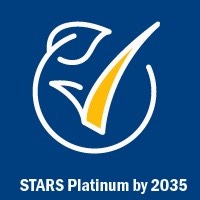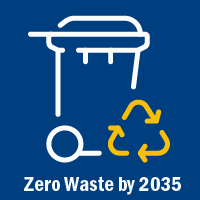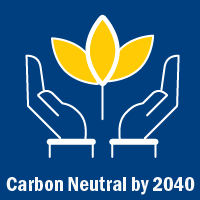Sustainability Framework

Using the sustainability rating system provided by theAssociation for the Advancement of Sustainability in Higher Education, Montana State University aims to attain the highest level: Platinum.


Recognizing the urgency of the climate crisis and need for an immediate, rapid, and sustained response based on the best available science, MSU will reduce its greenhouse gas (GHG) emissions to achieve carbon neutrality by 2040.
Learning & discovery
Buildings
Through utilizing the technical expertise and drive present at MSU, we can infuse efficiency into the design, construction, and maintenance of buildings on our campus. By continuing to incorporate energy districts, heat pumps, and geothermal technology into the way campus is operated, we can use resources most efficiently and effectively. Drawing on the insights gained from prior implementation of these technologies, MSU is equipped to transform our built environment while prioritizing health and safety, energy savings, and carbon neutrality.
Food Systems
Grounds
In order to establish beautiful, welcoming, and ecologically responsible campus grounds, we can focus on minimizing the use of chemicals, protecting and restoring wildlife habitat, and conserving resources. Resource conservation may also mean increasing efforts to reduce, reuse, recycle, and compost, bringing us closer to reaching one of our long-term targets of becoming a zero-waste campus. Water is an especially vital resource to continue conserving and protecting.
Procurement
As permitted by state law and other guidance, we can establish more sustainable procurement processes, from improving reporting and tracking methods to developing a sustainable purchasing policy for campus. Taking steps to further institutionalize sustainable procurement practices, such as purchasing environmentally friendly and socially just products and services from companies with strong commitments to sustainability, will make the sustainable, long lasting, cost-effective option the standard. This can apply to the purchasing of electronics, cleaning and janitorial products, paper products, vehicles, and more.
Transportation
MSU can develop, support, and promote sustainable transportation systems by increasing the availability, functionality, and accessibility of multimodal transportation options, including Streamline Transit, biking, walking, and carpooling. Improving and creating corresponding user-friendly infrastructure will help ensure the utility, safety, and ease of these modes of transportation. Sustainable commuting is an important piece of the puzzle in making MSU carbon neutral. So too, is incorporating emissions reductions goals into choices about vehicle rental and acquisition.
Engagement
To bolster engagement and foster a culture of sustainability, we can work to expand peer educator programs, increase intercampus collaboration, coordinate with external networks and organizations, and advocate and inform policy. Achieving the long-term targets of STARS platinum, zero waste, and carbon neutrality depends upon the involvement, dedication, and feedback from diverse stakeholders: students, faculty, staff, and community members. As such, the Sustainability Framework Targets and Objectives, including greenhouse gas emissions and other metrics, will be tracked and reported on in publicly-available datasets and annual reports.
Planning & administration
There are many facets of planning and administration to be considered while working towards our long-term targets. First, creating and continually updating an institutional Climate Action Plan will help to prioritize climate adaptation and mitigation strategies. Along with the Climate Action Plan, we will implement the Sustainability Framework in a manner that advances affordability, promotes equity, coordinates engagement, and encourages campus and community stakeholders to participate in governance. Through informed policies and decision-making centered around sustainability, MSU will bolster the strength and positively affect the health, safety, and well-being of the campus community.
